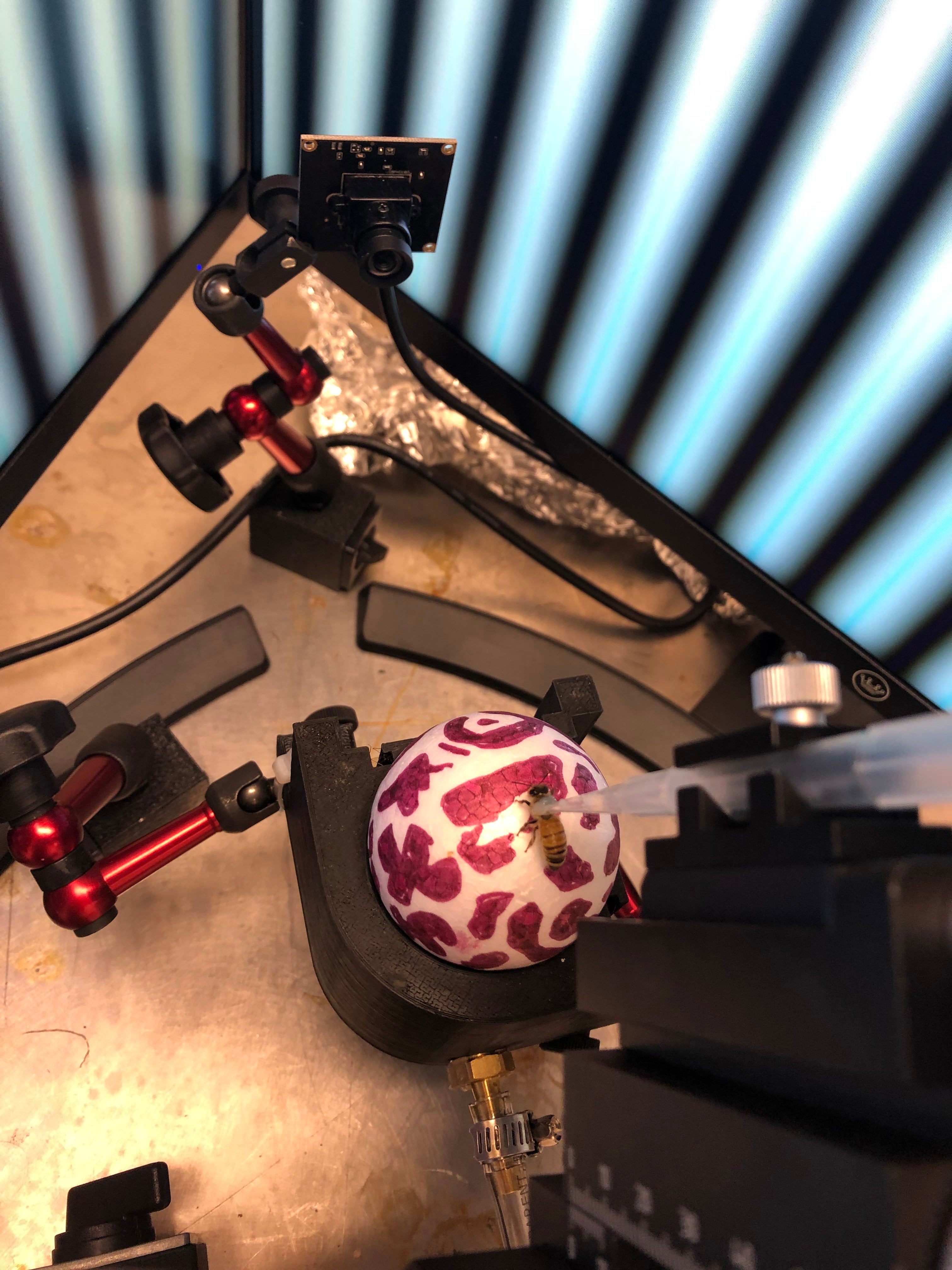Modern pesticides ‘making bees drunk’, scientists warn
The chemicals ‘damage the vital pollinators’ brains’, preventing them from walking in a straight line

Modern pesticides are making bees ‘drunk’, new research warns.
The chemicals damage the vital pollinators’ brains, preventing them from walking in a straight line, say scientists.
Exposure to neonicotinoids - the worlds’ most commonly used insecticide - and new generation sulfoximine is also believed to harm co-ordination.
It is similar to when drunk drivers struggle to step back and forth after being stopped by police.
An insect version of the challenge showed for the first time how pesticides affect the nervous system of bees in a similar way.
Lead author Dr Rachel Parkinson, from the University of Oxford, said: “Here we show commonly used insecticides like sulfoxaflor and the neonicotinoid imidacloprid can profoundly impair the visually guided behaviour of honeybees.
“Our results are reason for concern because the ability of bees to respond appropriately to visual information is crucial for their flight and navigation, and thus their survival.”
In Britain, a third of wild bees and are in decline. If current trends continue, certain species will be lost altogether. They pollinate flowering crops, such as oil seed rape.
Diminished ‘optomotor’ response could lower their ability to forage, explained Dr Parkinson.
The Food and Agriculture Organisation of the United Nations and the World Health Organisation has already warned of large-scale adverse effects on bees and other pollinators from pesticides.
Insects have an innate ‘optomotor response’. It lets them orient themselves back onto a straight trajectory when they threaten to steer off-course while walking or flying.
The UK team tested walking honeybees faced with videos of vertical bars that moved from left to right, or vice versa, across two screens.
It ‘tricks’ the bee into assuming that she has suddenly been blown off-course and needs to perform a corrective turn to return to a straight path.
A healthy optomotor response will then instruct the bee’s motor system to orient back to an illusory straight line mid-way between the optic flow from right and left.
The researchers compared the efficiency of the optomotor response between four groups of 22 to 28 wild bees.
They had all been allowed to drink unlimited amounts of a sucrose solution over five days.
It contained either pure or contaminated with 50 ppb (parts per billion) imidacloprid, 50 ppb sulfoxaflor, or 25 ppb imidacloprid and 25 ppb sulfoxaflor simultaneously.
All bees were less good at responding to the simulated optic flow when the bars were seemingly far away by being narrow or moving slowly.
This was compared to when they were made to look close by by being wide or fast moving.
But for any width and speed, the bees who had ingested the pesticides performed poorly compared to controls.
For example, they turned quickly in one direction only and didn’t respond to changes in the direction of movement of the bars, or showed a lack of turning responses.
The asymmetry between left and right turns was at least 2.4 times greater for pesticide-exposed bees.
Molecular analysis also showed pesticide-exposed bees tended to have elevated proportion of dead cells in parts of the brain’s optic lobes - important for processing visual input.
Likewise, key genes for detoxification were dysregulated after exposure. But these changes were relatively weak and highly variable across bees, and unlikely to be the sole explanation for the observed strong impairment of the optomotor response.
Dr Parkinson said: “Neonicotinoid and sulfoximine insecticides activate neurons in the insect brain and are not always recycled fast enough to prevent toxicity.
“The effects we observed could be due to a type of rewiring in the brain: to prevent neural damage by reducing the sensitivity of neurons to these compounds.”
She added: “To fully understand the risk of these insecticides to bees, we need to explore whether the effects we observed in walking bees occur in freely flying bees as well.
“The major concern is that - if bees are unable to overcome any impairment while flying - there could be profound negative effects on their ability to forage, navigate, and pollinate wildflowers and crops.”
Previous research has found every square kilometre in the UK has lost an average of 11 species of bee between 1980 and 2013.
It has far-reaching consequences. Insects provide a food source for many birds, amphibians, bats and reptiles.
A recent scientific review of insect numbers around the world suggested that 40% of species were undergoing “dramatic rates of decline”.
Bees, ants and beetles are disappearing eight times faster than mammals, birds or reptiles.
Earlier studies have found losses of butterflies, moths, beetles, bees and hoverflies across the UK.
The findings were published in the journal Frontiers in Insect Science. Last year a Bristol University study found pesticides are keepinbg bees awake at night by disrupting their circadian rhythms.
Subscribe to Independent Premium to bookmark this article
Want to bookmark your favourite articles and stories to read or reference later? Start your Independent Premium subscription today.

Join our commenting forum
Join thought-provoking conversations, follow other Independent readers and see their replies